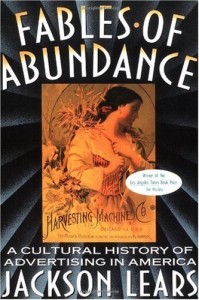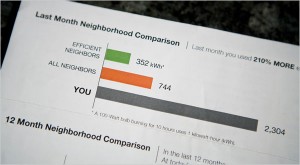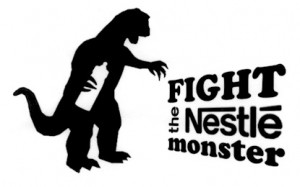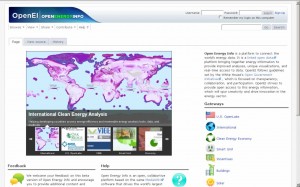Communications organizations need to act fast these days – like the bicycle maker that recently pounced on a green gaffe by General Motors.
Here’s how it went down.
GM put out this ad, targeted at college kids…

…showing a poor sap on a bike in front of a cute co-ed who was riding in a … wow, car!

…and then there was this part:

“Yep. Shameless,” wrote BikePortland.org publisher/editor Jonathan Maus. “But just more of the same from the auto industry.”
Cyclists went ballistic. The auto company – a recent beneficiary of American tax dollars, contributor to our national debt, and the front end of a pretty big greenhouse gas supply chain – actually had the gall to promote its cars as, well, an alternative mode of transportation.
Why pedal, indeed? Why drink tap water when you can get a plastic bottle from Fiji? Why compost your leaves when you can let the garbage man take them to the landfill? Heck, why regulate carbon emissions when it’s easier just to spew?
Cyclists occupied Twitter with complaints about GM. The company quickly apologized (smart) via Twitter, shifting the blame onto college kids (dumb, but no one called them on it):

One company in the bicycle industry, Giant Bicycles, actually made some hay with the story. The bike manufacturer came up with this take-off on GM’s ad and, within about 24 hours of the twitstorm’s beginning, posted it on Facebook.

That’s quick.
The Giant post gained more than 1,000 likes and 386 shares (a pretty big share ratio). That’s solid engagement and a boost for the brand. Although Giant is admired for Toyota-like value, it doesn’t have the cachet of the Pinarello, Orbea or maybe even Trek brand. So leading the charge against GM’s foul, if only for a minute, adds an emotional dimension to Giant.
Either way, Giant’s rapid content generation feat is rare. Sure, savvy communications organizations know how to join a Twitter conversation, but quickly developing solid content like the parody ad almost never happens. Many companies and agencies still use byzantine “public relations 1.0” workflows for social content creation, review and approval – assuming they can conceive of a clever response in the first place.
Too often, it still takes a month to put out a press release. Even if social content takes half the time, this pace simply won’t work. In the age of Twitter, Facebook or YouTube, an opportunity goes cold long before you’ve had a chance to run your proposed creative response up and down the chain of command, collecting edits, suggestions and feedback at every turn. By the time the content is blessed, if it ever is, it’s worthless.
To get results in 2011, be ready to act. Faster than you ever have. Like Giant, which is said to be the world’s largest bicycle manufacturer.
So … how does a giant company like Giant get so fast on its feet?
Well, we asked them*.
CleanSpeak: First, how did you come up with the idea for your parody ad?
An Le, Giant Global Marketing Director: GM’s ad was so off the mark that it made our idea quite easy. We simply illustrated the real “reality” of what college students (and many of us) are facing these days – rising cost of fuel, congestion, and an ever-expanding waistline.
CleanSpeak: How did you get the ad done so fast?
Giant: Instead of going through our agency or design house, we did this piece in-house. It took us about two hours from conception to going live on Facebook. With Facebook, we have a quick and casual way to get a message out to our core audience, and we would not have produced this parody ad if Facebook did not exist.
CleanSpeak: Do you pull off these quick content creation feats very often?
 Giant’s An Le in a charity ride. Photo by Jake Orness. Giant’s An Le in a charity ride. Photo by Jake Orness. |
Giant: We create content daily – be it news, videos, photos, etc. – but this is our first parody ad.
CleanSpeak: What’s your process for approving the concept and, later, the final? How many approvals?
Giant: We don’t have too many layers of management at Giant. I have final say in creative, and in creating this particular ad, our in-house designer (Nate Riffle, who sits next to me) and I bounced ideas back and forth and had it done in a couple of hours. If we work with a design agency, the process is similar but does take a bit more back and forth.
CleanSpeak: What is your secret for fast content creation?
Giant: Be quick. Avoid committee approval. Don’t worry about making it perfect. Have some guts to take chances once in a while. And don’t be malicious – do it in a spirit of fun.
…
* via email. They provided answers from their global marketing director in one hour and five minutes. Do your spokespeople move that fast? We got the right email address by pinging Giant’s Twitter address. That yielded another quick reply. Who’s monitoring your Twitter feed for media/blogger inquiries?







